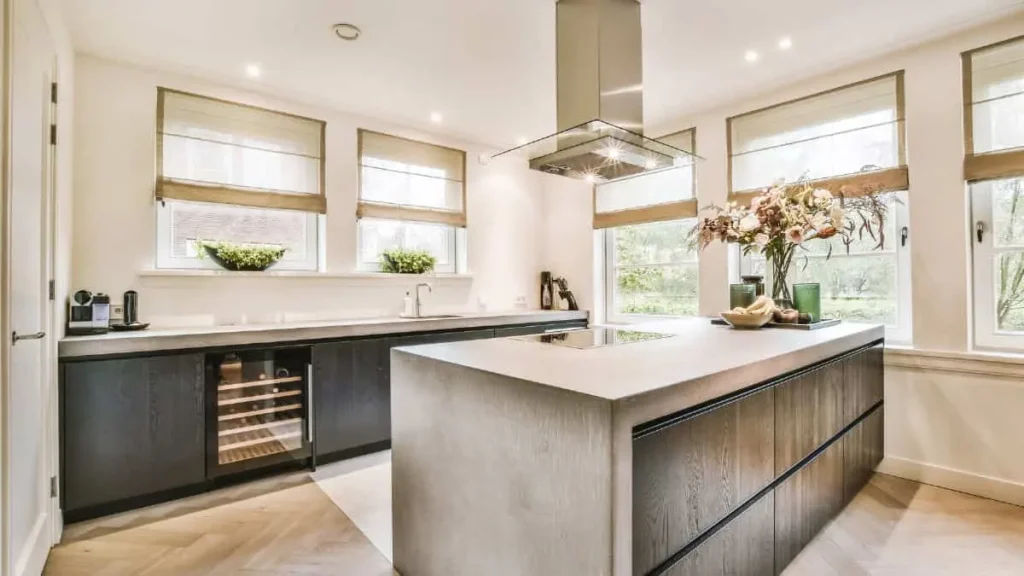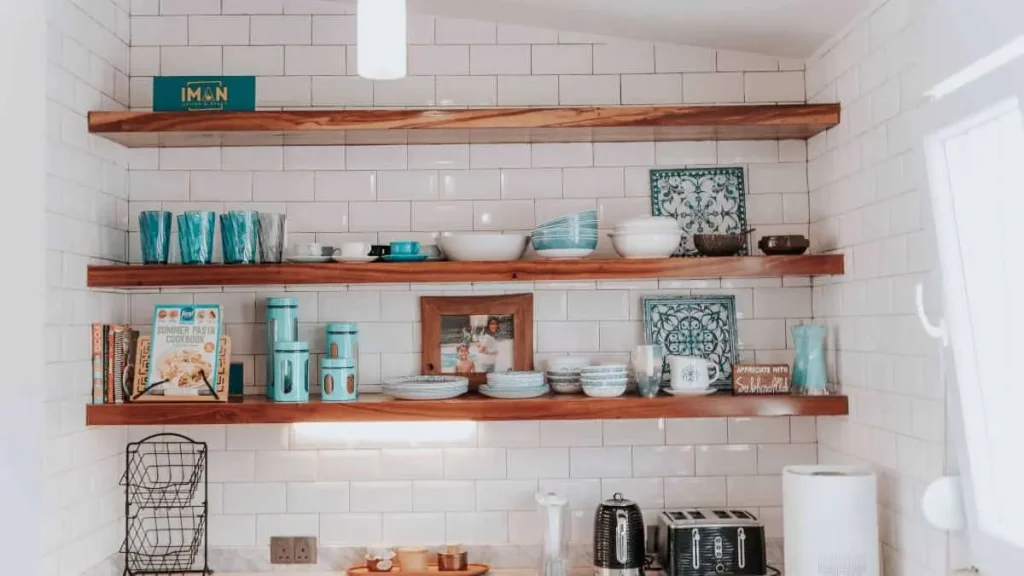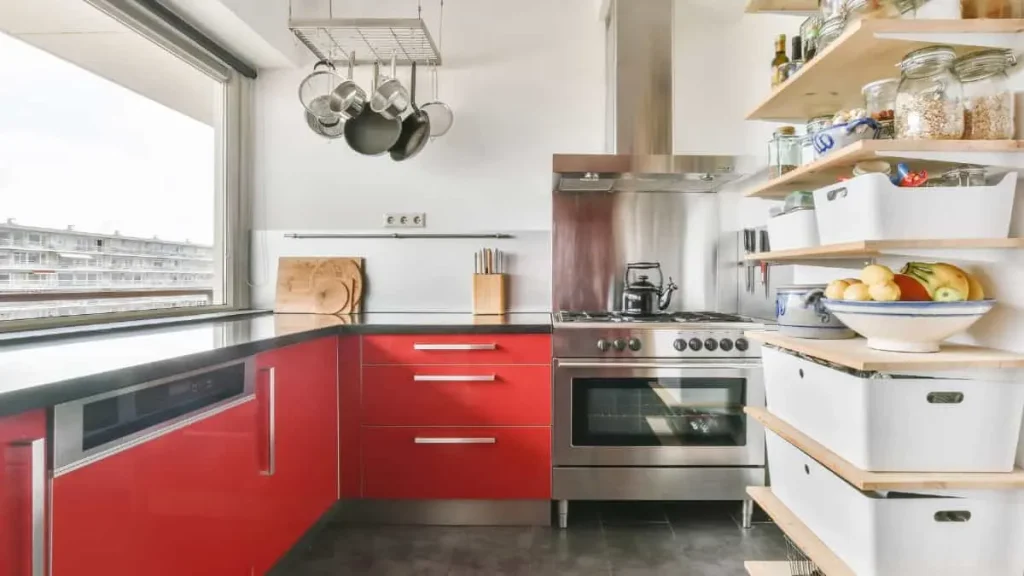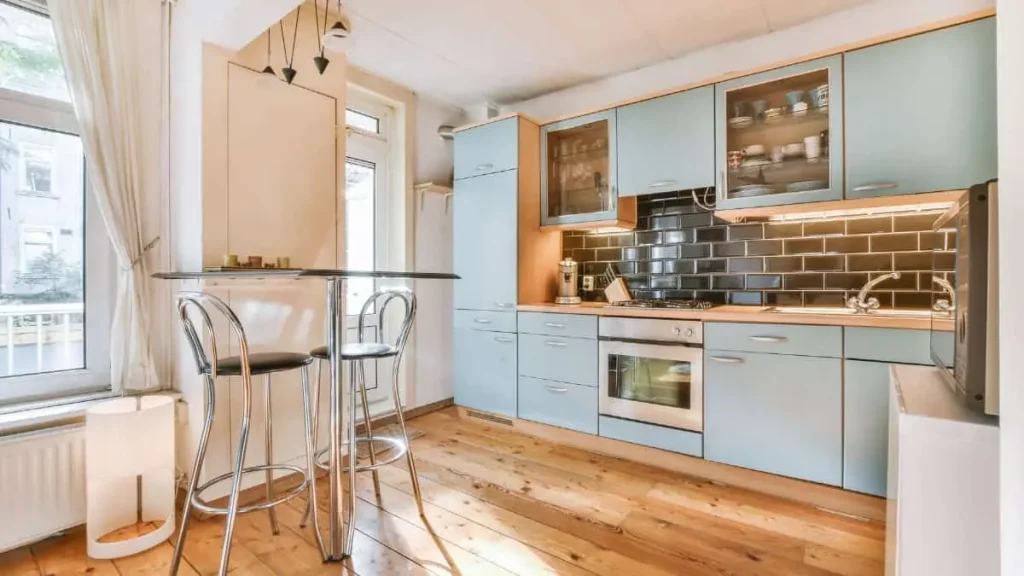A well-designed kitchen is more than just aesthetically pleasing; it’s a space where functionality and comfort are paramount. The principles of ergonomic kitchen design aim to create a space that minimizes discomfort and maximizes efficiency.
In this comprehensive guide, we delve into the essential aspects of ergonomic kitchen design, ensuring your kitchen not only looks great but also works seamlessly for you.
Understanding Ergonomics in Kitchen Design
Ergonomics is the study of designing equipment and environments to fit the people who use them. In the context of kitchen design, this means creating a space that reduces strain, enhances comfort, and improves overall usability. An ergonomic kitchen layout ensures that the most frequently used items and workspaces are easily accessible, minimizing unnecessary movements and promoting a more efficient workflow.
Key Principles of Ergonomic Kitchen Design

1. Efficient Work Triangle
The concept of the work triangle is a cornerstone of ergonomic kitchen design. It involves positioning the three primary work areas – the sink, stove, and refrigerator – in a triangular layout. This minimizes the distance and effort required to move between these essential zones, enhancing both comfort and productivity. An optimal work triangle should have a perimeter of 12 to 26 feet, with no leg of the triangle shorter than 4 feet or longer than 9 feet.
2. Proper Countertop Heights
Countertop height is crucial for preventing strain on your back and shoulders. The standard countertop height is 36 inches, but this can be adjusted to fit your specific needs. For most tasks, a height of 36 inches is ideal, but for more detailed tasks like chopping and preparing food, a slightly lower height of 30 to 34 inches may be more comfortable. Consider incorporating multi-level countertops to accommodate different tasks and user preferences.
3. Ample and Strategic Storage
Efficient storage solutions are essential in an ergonomic kitchen. Cabinets, drawers, and shelves should be designed to minimize bending, reaching, and lifting. Incorporate pull-out shelves, lazy Susans, and deep drawers with full-extension slides to make accessing items easier. Place frequently used items within arm’s reach and heavier items at waist height to reduce strain.
4. Adequate Lighting
Proper lighting is vital for both functionality and safety in the kitchen. Ensure a mix of task lighting, ambient lighting, and accent lighting to create a well-lit workspace. Task lighting, such as under-cabinet lights, illuminates specific areas where you perform tasks like chopping and cooking. Ambient lighting provides overall illumination, while accent lighting adds visual interest and highlights architectural features.
5. Comfortable Flooring
Kitchen flooring should be both durable and comfortable to stand on for extended periods. Materials like cork, rubber, and resilient vinyl provide cushioning and reduce fatigue. Additionally, anti-fatigue mats placed in areas where you stand for long periods, such as in front of the sink and stove, can help alleviate discomfort.
6. Accessible Appliances and Fixtures
Appliances and fixtures should be easily accessible and intuitive to use. Wall ovens at waist height, pull-out pantry shelves, and touchless faucets are examples of ergonomic features that enhance convenience. Ensure that controls and handles are within easy reach and require minimal effort to operate.
Designing an Ergonomic Kitchen Layout

1. One-Wall Kitchen
A one-wall kitchen is ideal for smaller spaces and can be designed ergonomically by ensuring that all essential elements – sink, stove, and refrigerator – are placed within close proximity. Use vertical space for storage and consider incorporating a pull-out work surface for additional prep space.
2. Galley Kitchen
A galley kitchen features two parallel walls with a central walkway. This layout is highly efficient, as everything is within easy reach. To enhance ergonomics, place the sink and stove on one side and the refrigerator and prep area on the other. Ensure the walkway is at least 4 to 6 feet wide to allow for comfortable movement.
3. L-Shaped Kitchen
An L-shaped kitchen provides ample counter space and can be designed with an ergonomic work triangle. Place the sink, stove, and refrigerator at each point of the L for optimal workflow. This layout also allows for additional features like a kitchen island, which can serve as both a prep area and casual dining space.
4. U-Shaped Kitchen
A U-shaped kitchen offers plenty of counter space and storage. To maximize ergonomics, position the sink, stove, and refrigerator on each of the three walls, forming a natural work triangle. Ensure there is enough space in the center for comfortable movement, ideally with a width of 5 to 6 feet.
5. Island Kitchen
An island kitchen provides flexibility and additional workspace. The island can house the sink, stove, or prep area, making it a central hub for kitchen activities. Ensure the island is positioned to allow easy access to the refrigerator and other key areas, and consider including seating for a multi-functional space.
Recommended: Top Kitchen Layout Ideas for Efficiency and Style
Ergonomic Kitchen Design Tips for Different Users

1. Designing for Multiple Users
If multiple people use the kitchen simultaneously, ensure there is enough space for everyone to move freely. Incorporate multiple prep areas, sinks, and cooking zones to accommodate different tasks and preferences. Consider the height and reach of each user when designing countertops and storage solutions.
2. Aging in Place
For those planning to age in place, an ergonomic kitchen can enhance safety and independence. Incorporate features like pull-out shelves, adjustable-height countertops, and touchless faucets. Ensure there is ample lighting and consider slip-resistant flooring to prevent accidents.
3. Families with Children
Designing a kitchen for families with children requires additional considerations for safety and accessibility. Use child-friendly materials, rounded edges on countertops, and easy-to-clean surfaces. Lower some storage areas to allow children to access their items independently, and incorporate safety locks on cabinets containing hazardous materials.
Conclusion
Creating an ergonomic kitchen is about more than just following design trends; it’s about making a space that works for you. By considering the principles of ergonomic design and tailoring them to your specific needs, you can create a kitchen that is not only beautiful but also comfortable and efficient. Whether you’re designing a new kitchen or remodeling an existing one, these tips will help you achieve a space that enhances your daily life.



